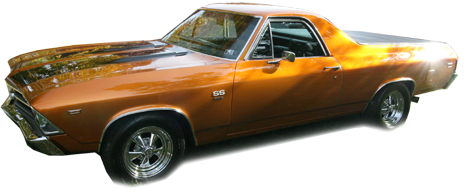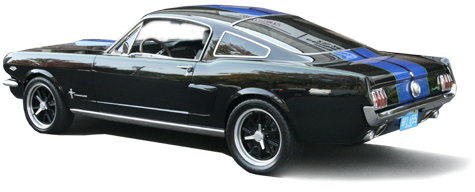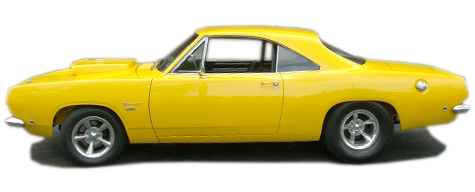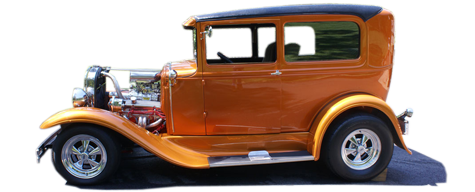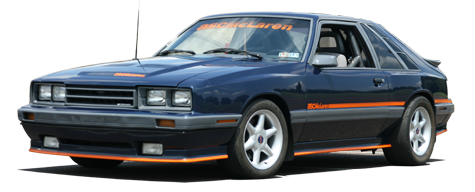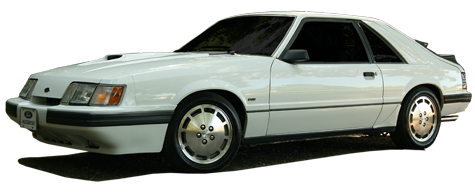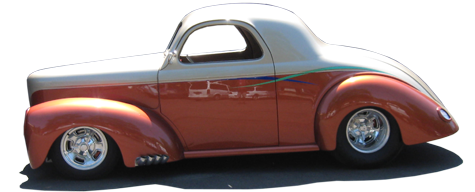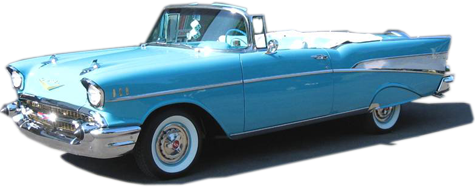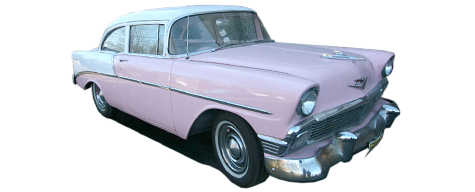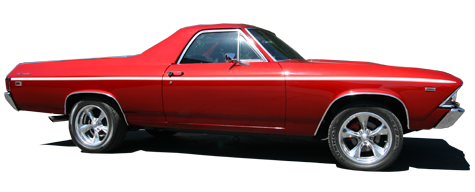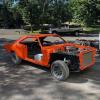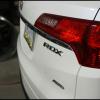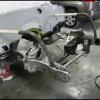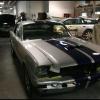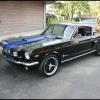
| A | B | C | D | E | F | G | H | I | J | K | L | M | N | O | P | Q | R | S | T | U | V | W | X | Y | Z |
- ABRASIVE: Substance used to wear away a surface by friction.
- ABRASIVE COATING: In closed coat paper, the adhesive is completely coated with abrasive, and in open coat paper, the adhesive is partially exposed, for the abrasive is not put on the paper close together.
- ACRYLIC RESINS: Synthetic resin that has excellent color retention and clarity and that is used in both lacquer and enamel.
- ACTIVATOR: Additive used to speed up the curing of paint resins.
- ALUMINUM OXIDE: Sharp and hard abrasive that is made by fusing mineral bauxite at high temperatures.
- AMBIENT TEMPERATURE: Temperature of the air surrounding an object.
- ANTICORROSIVE: Materials applied to metal to give corrosion resistance.
- ANTICORROSIVE AND INHIBITOR: Protective coatings applied on metal surfaces to retard or prevent corrosion and said to be anticorrosive or corrosion inhibitive.
- ATOMIZATION: Breaking up a fluid with an airstream, such as with a spray gun.
- ATOMIZE: Air at the gun nozzle breaks up the
paint and solvents into fine particles.
Back to Top
- BACK-SANDING: Technique of sanding a surface to taper the paint film away from the metal repaired area.
- BAKING: Application of heat to cure and dry a coating. In automotive refinishing, baking is used to speed up the drying of air-drying lacquers and enamel and is sometimes called force drying. The metal temperature in refinish baking usually does not exceed 180 F (82.2 C).
- BANDING: Single coat of paint applied to frame in an area to be sprayed.
- BASECOAT/CLEARCOAT: Type of paint coating.
- BINDER: Resin used to hold the pigment in a paint film.
- BLEEDING: Action whereby the color of a stain or other material works up into succeeding coats and imparts a certain amount of color. This is characteristic of certain red pigments used in lacquers and enamels. A nonbleeding color is one that is not soluble in materials used over it and, consequently, does not work up into succeeding coats. Bad body filler will also cause bleeding.
- BLENDING: Mixing together of two or more materials or the gradual shading of paint from one panel to the next to assure color consistency.
- BLISTERING: Bubbling up of the paint film in the form of small blisters.
- BLUSHING: White or grayish cast that sometimes forms on a lacquer film as it dries, particularly under conditions of hot, humid weather.
- BODY FILES: Variety of files used in accurately locating surface irregularities (high and low spots) on damaged areas after they have been "bumped" out. Also used in trimming down solder and plastic filled areas.
- BODY SOLDER: Alloy of tin and lead. Its properties may vary but the most common mixture consists of 30% tin and 70% lead or 30/70 solder as it is usually called.
- BRAZE WELDING: When bronze welding rod in a molten stage is deposited on metals that are heated to a cherry red; similar and dissimilar metals are bonded together.
- BRIDGING: Ability of an enamel or lacquer to cover a crack, void, or other small gap.
- BUBBLES, BLISTERS AND BULGES: Damage that occurs on vinyl roof covers.
- BUFFING: Technique used to polish an area to remove sanding marks of surface imperfections.
- BUFFING COMPOUND: Soft paste containing fine abrasive in a neutral medium, used to eliminate fine scratches and polish the top coat.
- BULL'S-EYE: Edge of a repaired area of a paint film that shows up after a surface has been repainted.
- BURNING: Condition resulting from rubbing a top coat too hard. The heat generated by the friction of the rubbing pad may soften the surface and cause it to stick to the pad, thus permanently marring the finish.
- BUTT WELD: Two pieces of similar metal are
aligned closely edge to edge. The edges are tack welded first and
then by running a good bead are solidly fused together.
Back to Top
- CATALYST: Substance that causes or speeds up a chemical reaction when it is mixed with another substance and that does not change by itself.
- CHALKING: Formation of soft white powder on the surface of a finish, which may be removed by friction of the finger or similar methods.
- CHECKING: Small, irregular cracks going partly or completely through a paint film. Like "alligatoring", only very fine cracks. Compare Cracking and Crazing.
- CHEMICAL STAINING: Spotty staining or discoloration of the paint topcoat caused by atmospheric conditions (acid rain, tree sap, etc.).
- CHIPPING: Condition of the finish flaking off or chipping away from the surface underneath.
- CLEAR COAT: A clear, shiny coat of paint (e.g. urethane or acrylic enamel) applied over the base or color coat of paint on a vehicle.
- CLIP: A group of related vehicle parts purchased from a salvage yard as an assembly (usually the complete front or complete rear section of a vehicle). Also known as Salvage Clip.
- COLD CRACKING: Cracking of a paint job resulting from a sudden drop of temperature.
- COLOR COAT: The single stage or BASECOAT that provides the final color of a coating system.
- COMPOUNDING: Use of an abrasive either by hand or machine to smooth out and bring up the gloss of an applied topcoat.
- CONTAMINANTS: Any polish, wax, tree sap, tar, oil, and the like that would damage the paint film or spoil the adhesion of a new paint film.
- CORROSION: Chemical reaction of oxygen and moisture, or corrosive materials on a metal surface. Usually referred to as rusting or oxidation.
- CORROSION RESISTANT: Material that resists the effects of corrosion.
- COVERAGE: Quality some colors have to cover other colors and the area a certain quantity of paint will cover.
- COWL: Front part of the vehicle passenger compartment.
- CRATERING: Surface blemishes in a freshly painted surface, usually in the form of small round patches also called fisheyes, usually due to contamination.
- CRAZING: Very fine minute cracks on the surface that are usually interlaced.
- CROSS DRAFT BOOTH: Spray booth in which the air flows from the rear section to the front section and is exhausted.
- CURING: Term used to explain the hardening
process of paint or resins.
Back to Top
- DRY SPRAY: This term is used if in applying a finish by spray the atomized paint is not absorbed in the film, leaving a rough, dry finish.
- DURABILITY: Life of a paint film.
- DUST FREE: Condition when a film has dried
so that it will no longer allow dust to penetrate and stick to the
finish.
Back to Top
- EMBLEM: Decorative piece of plastic or metal attached to the a vehicle.
- ENAMEL: Pigmented aklyd varnish usually characterized by a glossy surface. Dulux is such a pigmented synthetic resin solution.
- EPOXY RESINS: Resins obtained by the condensing reaction that occurs between phenols and epichlorohydrin.
- ESTIMATE: The written determination made by an
appraiser or estimator, upon inspection of a damaged vehicle,
regarding the cost required to restore the vehicle to the condition
it was in prior to the Loss.
Back to Top
- FADE: Denotes the change in the color of a surface coating where and when such a coating has been subjected to sunlight. It is a dying away or bleaching action.
- FAN: Spray pattern of a spray gun.
- FANNING: Use of pressurized air through a spray gun to speed up the drying time of a paint finish; it is not recommended.
- FEATHEREDGE SPLITTING: Cracks or stretch marks along the featheredge which occur while drying or shortly after the topcoat has been applied over a primer-surfacer.
- FEATHEREDGING: Sanding down a surface to a very fine edge; that is when one coat of material is made gradually thinner around the edge until it finally disappears.
- FEATHERING: Action of moving a spray gun trigger lightly at each end of a stroke.
- FEELING THE METAL: Used in detecting surface irregularities. The repair technician slides the palm of a hand back and forth over the work and is able to detect or feel any hollows or high spots that may be present.
- FIBERGLASS: Very fine staple fibers of glass that are spun together; it is used as insulation and for repairs on auotmobile and truck bodies.
- FILING: Pushing or drawing a file back and forth over the surface of the work in order to detect high and low spots (surface irregularities) or to wear down a surface to an exact size and shape.
- FILM: A layer of applied coating material.
- FISH-EYE ELIMINATOR: Additive put in paint to prevent the occurrence of fish-eyes in a freshly painted surface.
- FLAKE: Particles added toa color to achieve a metallic or iridescent finish.
- FLAKING: Condition when the finish does not knit properly to the undercoating, causing the finish to chip off the work by breaking into small pieces.
- FLAT: Finish that has no luster or gloss.
- FLAT RATE: Piecework method of paying for repair operations.
- FLINT PAPER: Inexpensive but short-working-life abrasive paper, not used extensively in body shops.
- FLOOD: Floating of a pigment to the surface of a coating, giving a changed color to the surface and lack ofuniformity in color appearance through the film.
- FLOP: Appearance of a color when viewed from any angle other than straight on. The flop of a color is also referred to as its pitch. The pitch is often different from the face when working with iridescent colors.
- FLOW: Ability of paint droplets to melt or merge together to form a smooth paint film.
- FLUID NEEDLE: Part in a spray gun that opens and closes fluid passages.
- FLUID TIP: Part of a spray gun that meters and directs the fluid stream.
- FOG COAT: Thin, highly atomized coat applied in such a way as to obtain a fast flash-off; and therebyachieve a minimum penetration of the thinner into the old finish.
- FORCE DRY: See Baking
- FORGING: Repair operation used in restoring welded butt joints to as near as possible the same thickness and molecular structure as that possessed by the sourrounding sheet metal.
- FRAME ALIGNMENT: Procedure by which the frame of a car, truck or bus that has been damaged in an accident, or from wear, is restored to the manufacturer's specifications.
- FRAME GAUGES: Used in determining the type of misalignment that has occurred and also the extent of the damage.
- FRAME RACK: Equipment used to repair damaged
frame and unibody members.
Back to Top
- GARNET PAPER: Hard, sharp, red abrasive; more expensive than flint paper but will last much longer.
- GLAZING: Application of a filler by means of a putty knife, the material being filled into the depression but scraped off the higher areas.
- GLOSS: Shine, sheen, or luster of a dry film.
- GUIDE COAT: Coat of a different color from the other coat is used to serve as a guide coat in rubbing or sanding to determine when a smooth surface has been reached.
- GUN BODY: Part of the spray gun to which all
required parts are bolted or attached.
Back to Top
- HAIRLINING: Very fine lines or checks on the dried surface coating of a finished material.
- HARDENER: Special additive designed to promote a faster cure of the enamel paint film.
- HARDNESS: Quality of the paint film that gives it resistance to surface damage.
- HOLD OUT: Ability of a surface to keep the top coat from sinking in.
- HUE: Basic color, that is blue, red, yellow, green, violet, or orange. Hue is used to determine where the color would fall generally on the color wheel.
- HUMIDITY: Water vapor present in the air in varying amounts.
- HVLP (HIGH VOLUME, LOW PRESSURE): Type of
spraying system that uses a high volume and low pressure of
atomizing air to apply material to a surface. Reduces over spray of
product into the atmosphere.
Back to Top
- INDIRECT DAMAGE: Any damage that occurs as a result of direct damage.
- INDUCTION BAKING: Heat used for baking finishes, induced by electrostatic or electromagnetic means.
- INDUSTRIAL FALLOUT: Chemical compounds present in the air which are deposited on the horizontal surfaces of vehicles and which under certain circumstances will affect the finish, particularly metallics.
- IRIDESCENTS: All colors that contain aluminum,
mica, or other particles that impart a metallic appearance to the
color. Used interchangeably with the word metallic. Iridescent
colors must be carefully matched on the face and the pitch in order
to achieve a desireable appearance.
Back to Top
- JERKY OR FLUTTERING SPRAY: Intermittent amount of fluid delivered by a spray gun; occurs in the suction feed type.
- JIG: Mechanical device for holding work in its
exact position while it is being welded.
Back to Top
- LACQUER: Refinishing material that dries by the evaporation of the thinner.
- LAP: Point where one coat extends over another.
- LAP WELD: Type of weld made by overlapping two pieces of metal and joining them by running a bead along only one of the edges.
- LIFTING: Disruption of a paint film by the application of a succeeding coat, caused by the solvents of the succeeding coat penetrating and partially dissolving or swelling the preceding dried film.
- LIGHTEN: Addition of white to make solid colors lighter; the addition of metallic flakes makes metallic colors lighter.
- LUSTER: Gloss of sheen of a finish.
Back to Top
- MASKING: Application of paper or other material and masking tape to cover an object that must be protected from overspray.
- MASKING PAPER: Paper designed to prevent paint bleeding through and resist water soaking to a certain degree.
- MASKING TAPE: Special paper that is coated with adhesive used to protect body parts or to attach masking paper to the car.
- MATCHING: In painting, to make colors look the same.
- METAL CONDITIONER: Acetic acid preparation that is used to prepare metal, remove rust, and etch the metal slightly to provide a good adherence between the metal and the paint.
- METAL FINISHING: Operation in which hidden surface irregularities are detected and removed by means of filing and picking the straightened metal unil all low spots have been eliminated and a perfectly smooth and level surface is obtained.
- METALLIC: General term applied to finishes containing aluminum particles.
- MIL: Measure of film thickness equal to 0.001 inches.
- MILKINESS: Cloudy, whitish, not clear.
- MIST COAT: Light spray coat of volatile solvent
by itself or with very little color in it.
Back to Top
- OPAQUE: Impervious to light. Not transparent.
- ORANGE PEEL: Uneven, pebbly surface somewhat resembling the skin of an orange; appears in a paint film that has been applied by spray.
- ORBITAL SANDER: Type of sander that uses an orbit motion to accomplish the sanding of different materials.
- ORIGINAL FINISH: Paint the car manufacturer applies at the factory.
- OVERALL REPAINTING: Refinish repair job in which the whole vehicle is completely repainted.
- OVERLAP: Amount of the spray pattern that covers the previous spray swath.
- OVERSPRAY: Sprayed paint that misses the part being painted and contributes to masking, floor, and paint arrestor (filter) paint waste buildup.
- OXIDATION: The act or process of combining with
oxygen.
Back to Top
- PAINT ARRESTOR: Filter used to clean the air of paint fumes before it is exhausted.
- PAINT FILM: Coating of paint that is applied to a material.
- PAINT REMOVER: Fast acting blend of solvent used to remove enamels, lacquers and varnish.
- PAINT STRAINER: Filter used to clean paint as it is poured into the gun cup.
- PARTIAL REPAIR PROCEDURE: Procedure used in painting when only a part of the panel is painted.
- PEARL LUSTER: Paint system that uses mica chips to give a pearl effect in the paint film.
- PEBBLING: Excessively large orange peel.
- PEELING: Loss of bond or adhesion of paint film from the surface to which it is applied.
- PIGMENT: Any fine, insoluble, dry, solid particles used to impart color.
- PLASTIC FILLER: Compound of resin and fiberglass used to fill dents on car bodies.
- POLYCHROMATIC: Term used by some paint manufacturers for color coats that contain aluminum powder in flake form.
- POLYESTER FILLER: Special kind of putty like filler used in filling slight imperfections and low spots on panels.
- POLYESTER RESIN: Bonding liquid that forms a good bond with fiberglass surfaces only.
- POLYMERIZATION: Drying of enamel by formation of a polymer from monomers.
- POLYOLEFIN: A plastic material used to make flexible bumper covers.
- POLYURETHANE: Chemical structure used in the production of resins for enamel paint finishes; also used for some plastic bumper covers.
- POOR ADHESION: Material that has poor bond to the underlying surface.
- POP RIVET: Rivet which uses a mandrel that is pulled out by a special tool to collapse and set a rivet.
- PRESSURE FEED GUN: Spray gun equipped with a separate paint container that is pressurized and connected to the spray gun by means of two hoses.
- PRIMARY COLORS: Main colors from which other colors are formulated.
- PRIMER: Undercoat applied to improve the adhesion of the color coat.
- PRIMER COAT: Used in a paint system to improve adhesion; requires sanding.
- PRIMER-SEALER: Undercoat that improves the adhesion of the topcoat and seals the old painted surfaces.
- PRIMER-SURFACER: High-solid type of primer used to fill small imperfections in a substrate.
- PUTTY GLAZING: Heavy bodied nitrocellulose or polyester material used to fill small flaws that are in the surface and are too large to be filled by primer surfacer.
- PUTTY KNIFE: Special knife used in applying
glazing putty.
Back to Top
- QUARTER PANEL: Side panel
which is generally a quarter of the total length of the vehicle and
extends from the rear door to the end of the car.
Back to Top
- RAIN OR WATER SPOTTING: Marks on the surface due to rain or water absorption.
- RECYCLED PARTS: Parts of a vehicle that have been used and are bought from a recycler.
- REDUCER: Referred to as the volatile substance used to thin the viscosity of enamel prior to application.
- REFINISH: Term used to designate that a part or a vehicle is to be repainted.
- REFLOW: Heat process used to melt lacquer to produce a better flow or leveling.
- RELIEVING: Process of removing and correcting stresses in a panel due to collision damage.
- RESPIRATOR: Filtering device worn over the mouth and nose to filter out particles and fumes and prevent them from reaching the lungs.
- RETEXTURE: To apply texture paint over a repaired area
- ROCKER PANELS: Assemblies of box type construction located directly below the doors, that are not only spot welded to the cowl assembly in front and to the rear quarter panel assembly at the rear but also to the side of the under body section.
- ROOF RAIL: Reinforcements welded to the pillars and to which the roof panel is welded.
- RUBBING AND POLISHING COMPOUND: Special type of abrasive used to smooth out and polish a paint film.
- RUN-SAGS: When too many or too heavy coats are
applied at one time causing the film to droop under its own
weight.
Back to Top
- SAG: Type of frame damage in which one or both side rails bend and sag at the cowl causing buckles to be formed on the top of the side rails.
- SAND SCRATCHES: Reproduction in the topcoat of the sanding marks in the underlying surface.
- SANDBLASTER: Piece of equipment used to clean metal using sand and pressurized air.
- SANDER: Power driven tool used with abrasives to sand car bodies.
- SANDER POLISHER: Power tool used to speed up the rate of polishing or sanding surfaces.
- SANDING BLOCK: Hard rubber or plastic flexible block used to provide consistent backing for hand sanding.
- SATURATION: Refers to a color's purity and richness.
- SCUFF SAND: To lightly sand a surface with an abraisive pad.
- SEALER: Paint product used to prevent bleed through of the previous coat or the sinking in of the new paint, resulting in loss of gloss
- SECTIONING: Process of joining two different sections of a part or vehicle by welding to make one part.
- SHADE: Variation of a color. Assuming that a color is generally blue, it can have a red shade or a yellow shade as well as being blue. Shade is also called undertone since it describes the subtle tone of a color.
- SINGLE COAT: Usually referred to as a coat of paint. Once over the surface with each stroke overlapping the previous stroke 50 percent.
- SINGLE-STAGE COMPRESSOR: Compressor in which atomspheric air presure is compressed to container pressure in one operation.
- SINKING IN: Term applied when one coat is partially absorbed by the previous one.
- SKINNING: Oxidation, hardening or drying of a paint at the surface of the liquid while in its container.
- SLIDE HAMMER: Weight that slides along a bar until it hits a stop. The bar usually has attachments to pull dents out, and the impact that results when the weight hits the stop helps to pull the dent out.
- SPOT REPAIR: Small refinish repair job in which a small section of a panel is refinished.
- SPRAY BOOTH: Enclosure used to paint a vehicle that has air moving through it.
- SPRAY GUN: Device that mixes paint and compressed air to atomize and control the spray pattern as the paint leaves the fluid needle and cap.
- STEERING COLUMN: Mechanism used to steer the vehicle.
- STRAIGHT LINE SANDER: Sander that uses a back and forth movement to sand a surface using sandpaper on its shoe.
- STROKING: Motion used when painting with a spray gun.
- STRUCTURAL ADHESIVE: Adhesive used to repair the structure of a plastic part such as a bumper cover.
- SUCTION-FEED GUN: Spray gun that has the paint container connected directly to it. It is designed to create a vacuum and thus draw the paint from the container.
- SURFACE DRYING: Drying of the topcoat while the bottom coats have remained soft.
- SWEATING: Separation and appearance at the film
surface of the oil in lacquer.
Back to Top
- TACK COAT: The first enamel coat. A full coat that is to dry only until it is quite sticky.
- TACK RAG: Cloth impregnated with varnish; used as a final cleanup to remove dust before applying the finishing paint.
- TACK-FREE: That point of time in drying at which the surface of the film will not fingerprint; yet the film is not dry and hard throughout.
- THINNER: Commonly known as a lacquer solvent, which reduces the viscosity of a lacquer to spraying consistency.
- TINT: Mixture of two or more pigments.
- TINTING COLOR: Finishing lacquer or enamel in which only one pigment or color is normally used.
- TOPCOAT: Last of final color coat.
- TRANSPARENT: Bases that contain a small amount of pigment. You can see through the base.
- TRICOAT PAINT JOB: Paint system that uses a base color coat then a pearl luster coat, followed by a clearcoat.
- TRIGGERING: Procedure used on a spray gun to move the trigger.
- TRUNK LID: Panel used to close the open area between the quarter-panels.
- TWIST: Type of frame damage in which both side rails are bent out of alignment, so that they do not run horizontally parallel to one another.
- TWO-TONE: Two different colors used on a single
paint job.
Back to Top
- UNDERCOAT: Material used
to protect the underbody sections of a vehicle.
Back to Top
- VISCOSITY: Thickness of a
fluid; resistance to flow.
Back to Top
- WEATHERING: Change or failure in paint caused by exposure to the weather.
- WELDING: Process of joining two pieces of metal to form a single piece of metal.
- WET SANDING: Procedure of sanding paint film with sandpaper and water.
- WET SPOTS: Discoloration caused where the paint fails to dry and adhere uniformly; caused by grease or finger marks usually.
- WINDSHIELD: Glass installed on the front of a vehicle to protect the occupants from the elements.
- WRINKLING: Term used when a paint film buckles
at its surface causing a shriveled appearance.
Back to Top
- YIELD STRENGTH:
Resistance a particular type of material possesses to permanent
stretching.
Back to Top
- ZIRCONIA: Very rugged
synthetic brasive that is used mainly for rough cutting.
Back to Top

